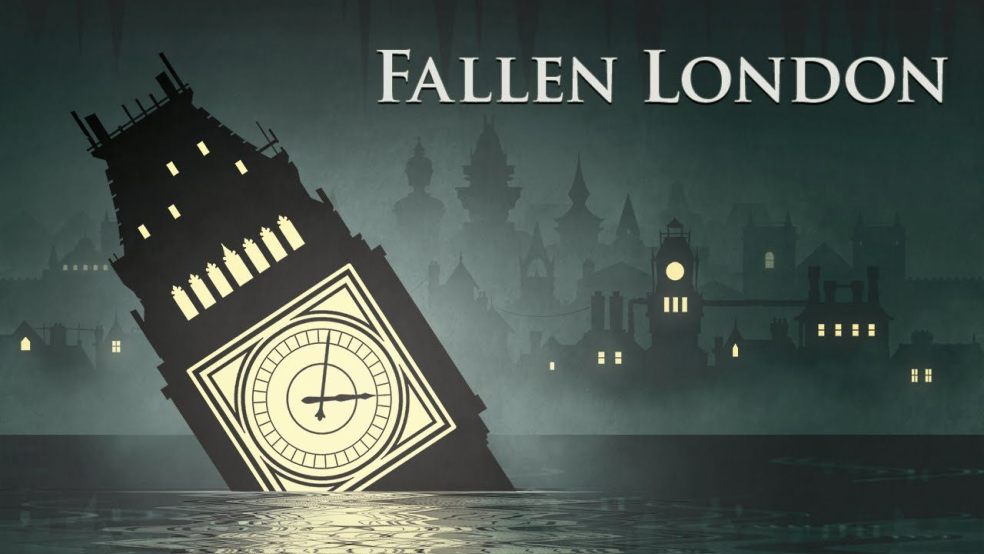
The Inspiration Behind Alexis Kennedy's First Games
Now armed with a concrete idea taking shape, aspiring games developer Alexis Kennedy set out to writing. Though it may not seem immediately obvious unless you’ve built a game before, however, there’s more to the process than simply putting words on one big page. Developers have to code the game, determine how it works with the script, and how it shows parts of the script to players.
The Technical Challenges of Games Development
There are two ways to approach this process. The first is to simply write your game’s script directly into its code, but this creates a number of problems very quickly: it isn’t easy for developers to write, it’s a hassle to make changes to, and it effectively requires that everyone working as a writer on your project have at least a decent understanding of the programming language you’re working in. Alexis Kennedy acknowledged that talented writers with a programming background are hard to come by in 2020, and were all but impossible to find in 2009. This meant that in order to get his game built, he had more challenges on hand than simply writing. He needed to write a game, program it, and run a business - three massive tasks for just one person.
Before he hired anyone else, though, he opted to create a web-based system of drop-down menus and text boxes called Jonathan. When Kennedy was developing his first games, there were far fewer tools available to build games like the ones he had envisioned. Now, there are many, including ink, Twine, Fungus, articy:draft, and ChoiceScript, but one’s options were much more limited at the time for developers who wanted to create games with more visuals than the traditional text adventure, which has no visuals at all.
At this point, Kennedy saw himself as a person wearing several different hats. He was creating a web game, which meant both building and designing it, designing a system that would help tell its story, designing the story and the setting where it would take place, and creating software to allow his game to tell its story. Making changes to one part of this equation required a number of edits and adjustments to the others.
Looking back, he doesn’t describe this as an impossible challenge, though it was one hindered by his less than stellar programming skills, as well as a number of mistakes that he would be reminded of frequently in the years to come.
Exploring Early Game Mechanics
He did, however, have a core set of game mechanics. He had built a system of axes of ambition, with four key qualities - Dangerous, Shadowy, Persuasive, and Watchful - all of which increased as players went through and unlocked more of the game’s story. This meant that at low Persuasion, players may be spending time at pubs and meeting people, while at high Persuasion you could be a celebrated figure in society. Each of these characteristics could be cultivated depending on how you played the game, and by choosing names that didn’t sound like traditional RPG character traits, you could set a mood and evoke a more specific feeling to remarkable effect.
At this point, he was delving deep into history. He determined that certain activities, like cat-catching, would be used as a way to increase skills along the Shadowy axis. He started dreaming up ideas and items like mushroom wine, and the people who might want an acclaimed poet to write an endless number of odes to it.
Kennedy’s collaborator Paul had returned with the icons he’d requested, which gave even this embryonic form of the game a distinct visual identity. A bat wasn’t just a bat - it became a “sleazy bat” at first, then finally ended up as the Sulky Bat. This process came to define many of the items and characters throughout the game that would become Fallen London.
Kennedy’s prototype allowed players to choose from a series of stories, make decisions, and see their effects - some random, and some not. Each storylet could affect your skills, give you items, and unlock new storylets. This created a game mechanic where stories would become available - or become unavailable - over the course of your playthrough, but also yielded a game that was extraordinarily flexible, non-linear, and endlessly challenging to organise. Kennedy also acknowledges, looking back, that he had no idea that this would prove to be a hugely influential game mechanic, and one that would change gaming for years to come.
The Plan to Monetise - and the Birth of a Company
The business model was simple: players were limited to a certain number of storylets each hour unless they paid to get access to new storylets daily - effectively, the same model used by Facebook games.
He shared his game to get early feedback from like-minded friends, and it was immediately positive. However, he hadn’t shared it with anyone who wasn’t quite as nerdy as he was before sharing it with his collaborator, Paul, who called the game “charming” and asked to see more things to do. In retrospect, he sees “charming” as a very specific type of feedback - it’s an unenthusiastic form of approval, showing that something isn’t quite there yet but is doing something right.
Alexis and Paul met up to talk through his vision for the game, as well as the importance of ensuring that Paul be paid properly from the very beginning of their working relationship. This led them to agree that Paul earn 10% of what the game made - a decision that, £2 million later, is definitely one of the greatest things he could’ve suggested at the time. This set the foundation for the partnership of Failbetter Games as a handshake deal.
Paul continued to create brand assets, logos, and illustrations, but he struggled with the plot. This led to the key transformation that put all the elements into place; instead of crafting the mythology of the Fifth City, the city was now Fallen London - a London that had been stolen, dragged into the Earth, and reenvisioned to tell a truly new story in a fascinating new way.
Read more about Alexis Kennedy here.













